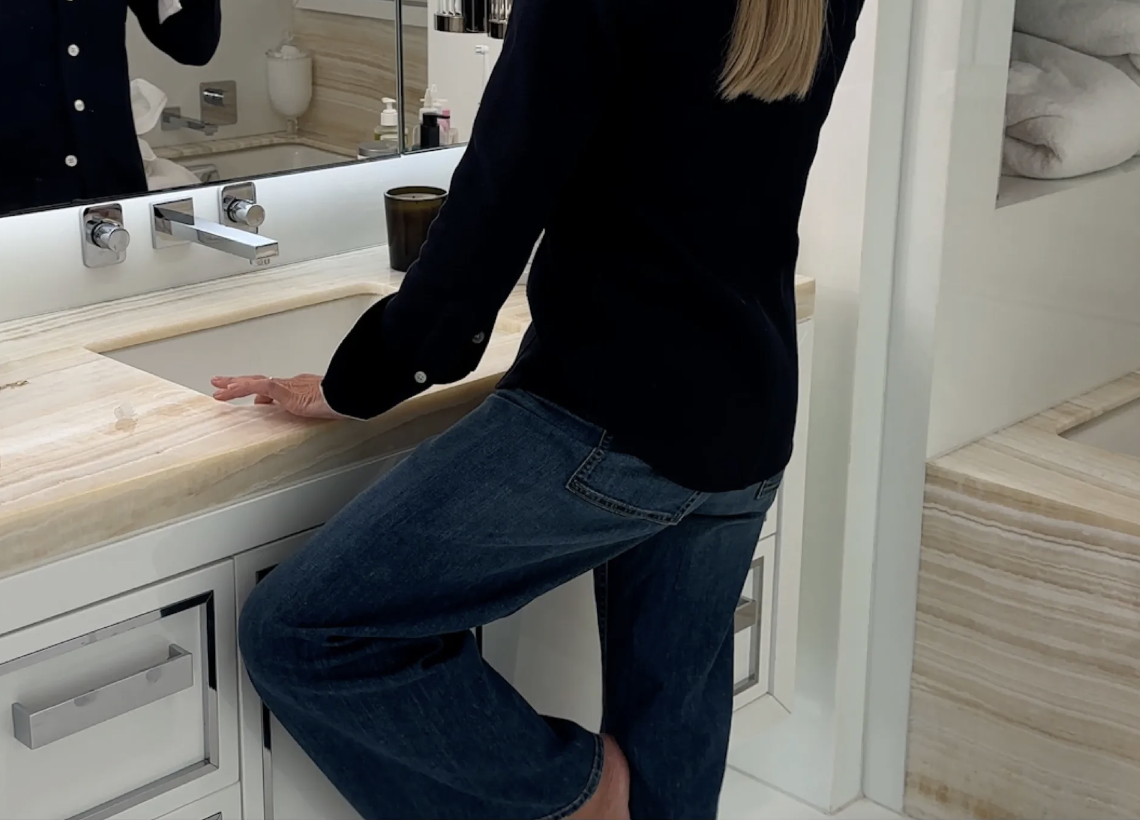Fitness Challenges
The Most Important Workout You've Never Heard Of
You can’t stop every fall, but you can train your body to recover from one. That’s where reactive perturbation training comes in.

If you’re over 50, you’ve probably had that heart-stopping moment: a slip on a wet floor, a stumble on uneven pavement, a skid over a rug. Most of the time, you recover with a laugh (and maybe a sore shin). But as we age, those falls can become life-altering.
- Zoom In: Each year, 3 million older adults go to the ER for fall-related injuries. And over 95% of hip fractures (which carry a high mortality risk) result from falls.
Enter: Reactive Perturbation Training (RPT). It’s a research-backed method that trains your body to “catch itself” when balance is suddenly disrupted. And done right, it could prevent you from becoming another ER statistic.
Why This Matters For Women Over 50
Maybe you’re thinking, “I’m not clumsy. This doesn’t apply to me.”
But falls aren’t just accidents. They’re biochemical events. As we age, our bodies change in a way that makes falls more dangerous, no matter how coordinated we’ve always been.
Here’s what happens when you fall:
- The brain detects perturbation. Nerves in your feet and legs signal “we’re falling.”
- The body launches a rapid motor response. This might be a quick step forward, a hip shift, an arm swing, etc.
That rapid motor response is everything. Without it, any force that shifts our center of gravity (sideways, forward, backward, or with a twist) would send us toppling. The problem is that as we age, those reactions slow down dramatically.
- Zoom In: After menopause, estrogen drops and decreases bone density and muscle mass. This leaves bones weaker and more prone to breaking.
Combine all of these factors (a slower reaction time, fragile bones, muscles that can’t catch you as well), and you get the perfect storm for a fall to do real damage.
Cue: Reactive Perturbation Training
The good news is that RPT significantly reduces your chance of falling in real life. But what exactly is it?
- The What: You practice controlled stumbles and slips in a safe, supervised environment. Think walking on a treadmill that speeds up (or slows down), or standing on a wobble board.
- The How: By repeatedly disrupting your balance, you're training your nervous system to get faster at sending the right signals to your muscles.
Now, the science: A 2015 meta-analysis of 8 randomized controlled trials with 404 participants found that those who completed RPT were 29% less likely to fall compared to control groups.
And in some trials? Just a handful of sessions improved balance recovery for months.
But there’s another thing RPT does that doesn’t show up in the studies: it ends the fear cycle. After a fall, many women move less out of fear. But less movement leads to weaker muscles and slower reactions, which ironically, increases your chance of falling again!
RPT ends that cycle and gives you the power to (literally) move on.
How to Practice RPT Yourself
Fortunately, you don’t need fancy equipment or a specialist. We actually do a lot of this type of training in The Wellness Experiment.
Think step training, balance challenges, agility drills, and more, all with the goal of strengthening both sides of your body and training your nervous system to react faster in case you fall.
- Doctor’s Note: About 80% of the time, my workouts have been on one leg and then the other, to build balanced strength. And I don’t just do this in the gym! A favorite of mine is to alternate standing on one foot while brushing my teeth.
Most workout programs aren’t designed for women over 50, so they don’t include any RPT techniques. The Wellness Experiment is not one of them. We know life will never stop throwing slippery, uneven sidewalks your way. The question is: Will your body be ready to react?
With a little training, the answer can be yes! Whether you can react in high heels is a topic for another day :-)


